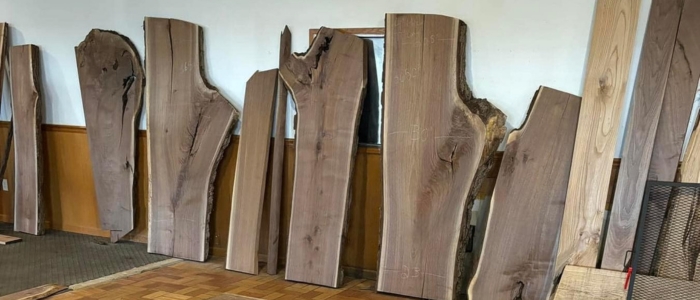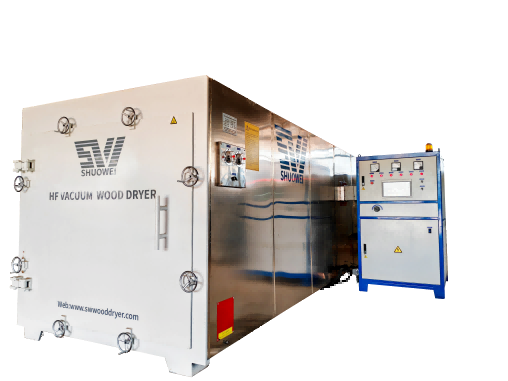Kiln dry lumber is an effective way to speed up the drying process. There are a few different ways to accomplish kiln-drying wood, but these are three of the most common methods: air drying, solar drying, and using a dehumidifying kiln. While each method can prove successful, there are pros and cons for each, so it is important to weigh the advantages and disadvantages before choosing a kiln-drying method.
If you are looking to kiln-dry your lumber, there are a few different methods you can try. Air drying is one of the most popular methods and simply involves stacking your wood in an area with good airflow. However, it may take several months for your wood to dry completely.
Whether you’re a DIYer, a contractor, or someone who just wants to know how long it takes for wood to dry, this article will be beneficial for you.

How Long To Kiln Dry Lumber
The length of time that it takes for your wood to dry depends on several factors, such as the type and thickness of the wood, the climate conditions in your area, and the kiln-drying method you use.
Depending on the type of wood, air-drying is a natural process that can take anywhere from 8 to 16 months. On the other hand, kiln-drying typically takes 6 to 8 weeks. There are no internal tensions introduced into the wood during this operation.
To ensure that the wood dries evenly and consistently, it is important to monitor the temperature and humidity levels in the kiln during the drying process. Other factors, such as airflow and ventilation, will also impact how quickly your wood dries.
If you are looking for a faster way to dry your lumber, solar or dehumidifying kilns can be a good option. However, these methods are generally more expensive and require specialized equipment, so it is important to do your research and assess your needs before choosing a drying method.
Ultimately, the best way to achieve long-lasting dry lumber is to work with an experienced team of professionals who have the tools and expertise to help you achieve your wood drying goals.
If you are looking to kiln-dry your lumber, there are several methods that you can try, including air drying, solar drying, and using a dehumidifying kiln. Each method has its own advantages and disadvantages, so it is important to consider all of these factors before choosing a method.

Tips on how to kiln-dry lumber successfully:
- Give your wood time to acclimate before putting it in the kiln. This means allowing it to sit for a few weeks or months in an area with good airflow and relatively high humidity levels, depending on the climate conditions in your region.
- Make sure that you have the right equipment and setup for your kiln. This includes proper ventilation, temperature controls, and humidity monitoring systems to ensure that the drying process is as efficient as possible.
- During the kiln-drying process, monitor the wood closely and make adjustments as needed to keep it within optimal conditions for drying. For example, you may need to increase or decrease the temperature, humidity, or airflow to get the best results.
- Consider working with a professional team of wood drying experts who have experience kiln-drying lumber and can offer helpful tips and advice along the way. With the right tools and knowledge, you can achieve long-lasting, high quality dry lumber for your home, construction project, or other needs.
Whether you need to dry your own lumber for a DIY project or are looking for quality wood drying services for a professional construction or woodworking project, it is important to do your research and choose the right method that best meets your needs. With the right tools and knowledge, you can achieve long-lasting, high-quality dry lumber for your home, construction project, or other needs.
Frequently Asked Questions
What is the best wood drying method?
There is no right or wrong answer to this question, as the ideal method for your needs will depend on the type of wood you are drying, the climate conditions in your region, and other factors. Some common methods include air drying, solar drying, and using a dehumidifying kiln. Each of these methods has its own advantages and disadvantages, so consider all of your options carefully before choosing the best method for your needs.
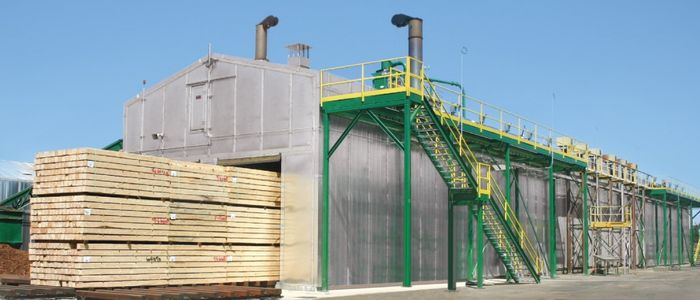
How long does it take to dry wood in a kiln?
The amount of time that it takes for wood to dry in a kiln will depend on various factors, including the type of wood you are drying, the climate conditions in your region, how large and thick your lumber is, and other factors. On average, most kiln-dried lumber takes between 4 and 8 days to fully dry. However, this process can take longer or shorter depending on the individual circumstances.
What are the benefits of kiln-drying wood?
There are several benefits to kiln-drying your wood, including more uniform drying, less chance of warping, and longer-lasting results. Kiln-drying also tends to produce higher-quality lumber since it helps take the moisture out of wood more quickly, resulting in better strength, hardness, and density. Whether you are looking for high-quality lumber to use in a DIY project or a professional construction job, kiln drying is an excellent option for achieving long-lasting results.
What can you do if your wood shrinks after drying?
If your wood shrinks after drying, there are several steps that you can take to minimize this issue. First, you should make wood for a construction project or just need to dry your own lumber for DIY projects around the home, Kiln-drying is an effective solution. A dehumidifying kiln can help your wood dry more quickly and efficiently, resulting in less shrinkage and a stronger finished product.
Additionally, you may want to consider working with a professional team of lumber drying experts who have the right equipment, knowledge, and experience to guide you along the way. With these tips in mind, you can minimize the shrinking that often occurs after drying your wood.
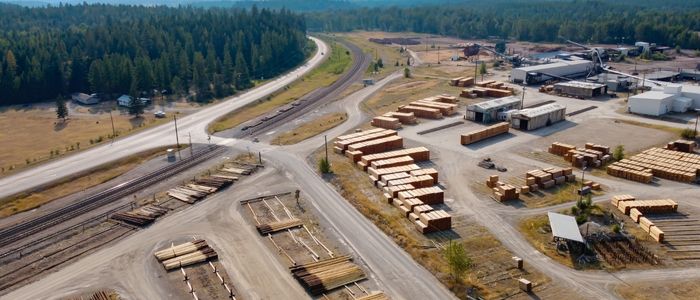
What can you do if your kiln-dried lumber is cracking?
Cracking is a common issue that often occurs while drying wood in a kiln and can range from minor cracks to major splits. If you are experiencing cracking or splitting in your kiln-dried lumber, there are several steps that you can take to minimize this issue. First, if possible, choose a more uniform piece of wood to avoid the cracking problem in the first place.
Additionally, check the moisture levels regularly and increase or decrease the temperature and humidity inside your kiln as needed to ensure optimal drying conditions. Finally, if possible, consider working with a team of professionals who have the knowledge and experience to guide you along the way. With these tips in mind, you can minimize cracking or splitting when drying your wood in a kiln.
What are some other ways to properly dry lumber?
There are several other methods for drying lumber that you may want to consider, each with its own benefits and drawbacks. One of these is air drying, which involves hanging your lumber vertically in a dry location that receives lots of sunlight. Another option is solar drying, which involves laying the wood flat under a large sheet of plastic and allowing heat and light from the sun to speed up the drying process.
Lastly, you may want to consider using a dehumidifying kiln, which combines both heating and cooling methods to efficiently remove moisture from your wood. Depending on the type of wood that you are drying, the climate conditions in your region, and other factors, any one of these options could be the best choice for your needs.
What are some common mistakes to avoid when drying lumber?
There are several common mistakes that you should try to avoid while drying your lumber, such as excessive shrinkage, cracking, or warping. Additionally, it is important to always keep a close eye on the moisture levels inside your kiln and adjust the temperature and humidity levels accordingly to avoid these issues.
You should also avoid stacking the lumber too tightly, as this can cause problems with moisture removal and result in uneven drying that could lead to excessive shrinkage and cracking. With these tips in mind, you can ensure that your wood dries more efficiently and without any of the common mistakes or issues that often occur during this process.
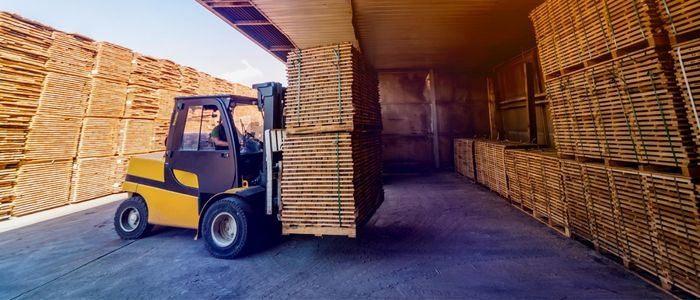
Conclusion
Drying your lumber with a dehumidifying kiln is one of the best ways to achieve long-lasting results and minimize shrinking, cracking, and other common issues that often occur while drying. By choosing a high-quality kiln and monitoring the moisture levels regularly, you can ensure that your wood dries properly and without any issues.
Additionally, working with a professional team of lumber drying experts can help guide you along the way to avoid the common mistakes and issues that often occur during this process. You can always visit HeBei ShuoWei’s website for more help. When it comes to kiln-drying your lumber, follow these tips and you are sure to achieve long-lasting results.

